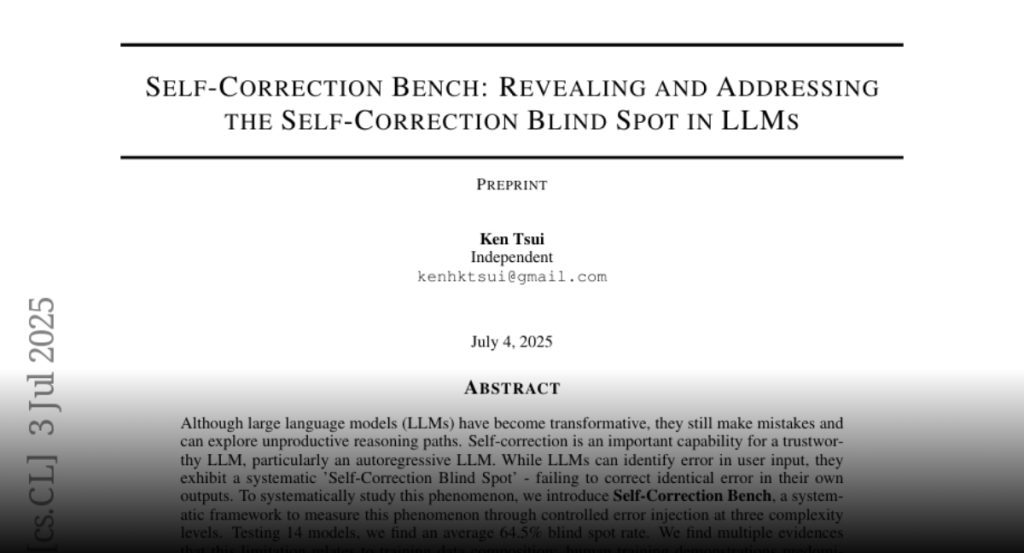Self-Correction Bench measures the self-correction blind spot in large language models, finding that training primarily on error-free responses contributes to this issue; appending “Wait” notably improves their ability to correct errors in their outputs.
Although large language models (LLMs) have become transformative, they still
make mistakes and can explore unproductive reasoning paths. Self-correction is
an important capability for a trustworthy LLM, particularly an autoregressive
LLM. While LLMs can identify error in user input, they exhibit a systematic
‘Self-Correction Blind Spot’ – failing to correct identical error in their own
outputs. To systematically study this phenomenon, we introduce Self-Correction
Bench, a systematic framework to measure this phenomenon through controlled
error injection at three complexity levels. Testing 14 models, we find an
average 64.5% blind spot rate. We find multiple evidences that this limitation
relates to training data composition: human training demonstrations
predominantly show error-free responses rather than error-correction sequences,
unlike RL-trained models that learn error correction through outcome feedback.
Remarkably, simply appending “Wait” reduces blind spots by 89.3%, suggesting
that the capability exists but requires activation. Our work highlights a
critical limitation in current LLMs and offers potential avenues for improving
their reliability and trustworthiness.

